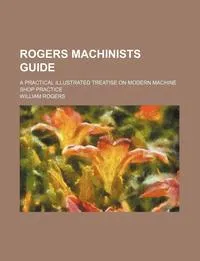Rogers Machinists Guide; A Practical Illustrated Treatise on Modern Machine Shop Practice
Автор: William Rogers
Переплёт: Мягкая обложка
📗 This historic book may have numerous typos and missing text. Purchasers can download a free scanned copy of the original book (without typos) from the publisher. Not indexed. Not illustrated. 1913 Excerpt: ...point of the lathe center rests at the bottom of the "center-pop," and is not supported at the sides, thus not having a proper bearing, and consequently being free to shift about as the cutting pressure is applied; the third trouble will arise if the " center-pop " at the dead center wears, as above suggested; if the fourth trouble is found to exist, the cause will be because the end of the work has not been filed at right angles to the axis ore centering up, thus causing the lathe center to have niore bearing on ooc 'ban the other. DRIVING WORK BETWEEN LATHE CENTERS. Before the "work is put between the centers, observe whether the live center runs true in its place; if not, take it out and replace it again; if it cannot be got to run true, it must be trued up in its place. The centers for turning straight work must be "in line"; they can be set in line by sliding up the tail-stock and bringing the centers together, and adjusting the dead center; now, clean the ways and slides, oil the bearings thoroughly, and the lathe is ready for service. When a piece of work has been centered and placed in the lathe ready for turning, it is obvious that some sort of contact or connection must be established between the work and the lathe mandrel, so that the latter can ' drive" or carry round the former as it revolves. This connection is usually provided by means of the face-plate or "driver-plate" of the lathe, and a "carrier" or "dog" on the work. Such an arrangement is shown in fig. 273. Fig. 274 is a perspective view looking down on a lathe in operation. Fig. 275 shows an end view of a lathe with the cutting tool in operation on a round shaft; the cutting tool is held firmly in a tool-post in an u...
Мнения
